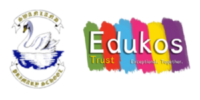D&T
Design and Technology Curriculum
At Swanland School we believe it is vital that we equip our children with a creative and challenging curriculum, which enables them to achieve and succeeed. The Design and Technology scheme of work reflects the ethos of the school, providing our children with the opportunities needed to develop transferable skills and knowledge to cope with an ever-changing world.
Through the study of D&T, we will equip our children to become independent, creative problem-solvers and thinkers, enabling them to confidently deal with our rapidly changing world. The D&T scheme of work enables children to use creativity and imagination to design and make products that solve real and relevant problems within a variety of contexts, considering their own and other’s needs, wants and values. At Swanland School, we ensure that children combine practical skills with an understanding of aesthetic, social and environmental issues. Through the evaluation of past and present design and technology, they develop an understanding of its impact on daily life and the wider world. This is rooted in mutual respect and the fostering of empathy and community understanding at local, regional, national and global scales. At Swanland School, we model this in terms of the inclusive nature of the learning and teaching we provide.
Design and Technology
Intent
At Swanland School, we aim to have a high-quality Design and Technology curriculum, which engages, inspires and challenges pupils. To enable this to happen, we have established a progressive, creative and inclusive curriculum. Our curriculum offers our pupils the chance to use creative thinking and design skills within a defined purpose and with a tangible outcome. Through a variety of creative and practical activities, pupils are taught the knowledge, understanding and skills needed to engage in a process of designing and making.
The scheme of work used throughout the school is in line with statutory requirements as well as ensuring that each year group will teach specific areas of Design and Technology, which are designed to expand the learning obtained in previous years, whilst building further on pupils’ understanding of D&T ideas, subject knowledge and skills. Swanland School commits to ensuring the D&T our pupils learn is inspiring and stretches them intellectually.
Implementation
To ensure high standards of teaching and learning in Design and Technology, we implement a curriculum that is progressive throughout the whole school. Our pupils work within a range of contexts, through a mainly topic-based approach which allows for cross-curricular links to be made. Design and technology is taught as part of a termly topic, focusing on the knowledge and skills stated in the National Curriculum. Some topics may link to the PSHCE, ICT and Maths curriculum.
Swanland School follows the Projects on a Page scheme of work. Created by the Design and Technology Association, this is a creative and imaginative scheme which is based on universal principles of effective teaching in Design and Technology. Each year group will complete three Design and Technology units per year, with one being food and nutrition. The children will be encouraged to be reflective learners as they follow the process of designing, making and evaluating. Key Stage One children learn about the initial skills of design and technology such as lever design and basic textile design; Key Stage Two children advance their skills at a greater depth. Our principal aim is to develop the children’s knowledge, skills and understanding in Design and Technology within a creative and skills-based curriculum.
Health and safety
Equipment is safety checked and children are taught how to safely use all equipment.
Homework
Homework, in Design and Technology, is provided in line with whole school policy and will be given at the discretion of the teacher, where appropriate, and such to coincide and support design investigations and topics.
Impact
We believe that our Design and Technology curriculum is progressive and challenging, whilst remaining relevant. It is carefully planned to demonstrate progression. We measure the impact of our curriculum in several ways, which includes: learning walks and pupil voice, lesson observations, book scrutinies and skills lists to aid teacher assessment.
Through our Design and Technology curriculum, we envisage that:
- children will develop the creative, technical and practical expertise needed to perform everyday tasks confidently and to participate successfully in an increasingly technological world
- children will develop their knowledge, and learn the techniques and skills needed to design and make high-quality prototypes and products.
- children will be encouraged to become problem solvers, both as individuals and as part of a team.
- children will be allowed to reflect on and evaluate, present and past design and technology, its uses and impact.
- children will learn how to critique, evaluate and test their ideas and products, as well as the work of others.
- children will understand and apply the principles of nutrition and learn how to cook.
- children will learn to be passionate and excited about the processes involved in designing and making products, including working with, preparing and tasting food.
- as designers, children will develop skills and attributes they can use beyond school and into adulthood.
During each year group the teacher will be able to use their knowledge and understanding of each pupil, gained through extensive formative assessment over the previous Design and Technology topic, to reach an accurate judgment of what they know and can do. This is then added to Scholar Pack or in the case of the EYFS added to the pupils’ online learning journal via Tapestry. Most critically this decision is based on the professional knowledge and judgement that the teacher possesses of the pupil, built up over an extended period of time, which is then used to make a rounded and holistic judgement of their attainment in Design and Technology. Tapestry is used in the EYFS and Seesaw in KS1 and KS2 to upload children’s work, involving parents in their child’s learning journey.
